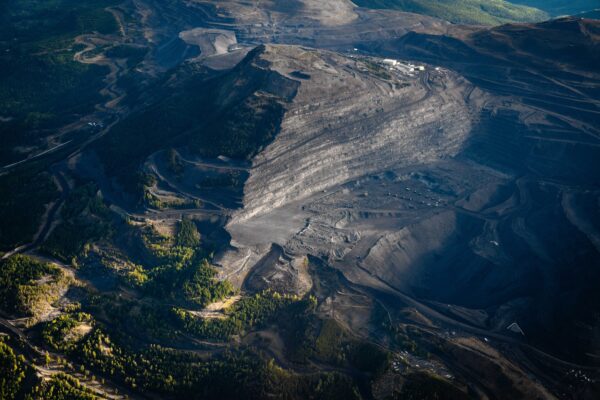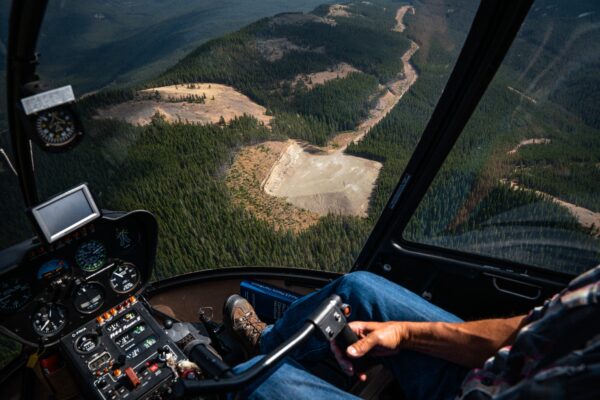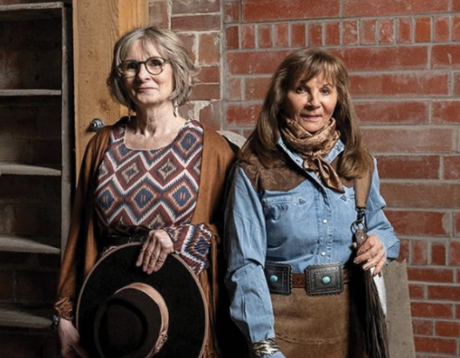By Sid Marty
Photos Courtesy Sid Marty, Callum Gunn, Paul Samycia
The Crowsnest Pass is celebrated for its colourful past of rum runners and hardy coal miners — men and families from all over Canada and Europe who came to work in its underground mines.

But through its boom-and-bust cycles, the area seemed cursed by disaster. The Frank Slide on Turtle Mountain took 90 lives and an entire town in 1903; in l914 the Hillcrest Mine disaster, Canada’s worst, claimed 189 men and left 250 children fatherless. At Coal Creek, 128 men died in 1902 and 34 in l917; 30 died at Bellevue in 1910 — the list goes on.
You might think people were relieved to be free of Old King Coal by l983, when the last mine shut down, at Coleman. You might be wrong. My rancher neighbour, the late Steve Sekella, liked digging coal in the Bellevue mine; the pay helped him keep the ranch afloat. But the world moved on to strip mining, and people in the Pass still commute to the Teck Resources mines at Sparwood for good-paying jobs. As one Pass miner put it to me, “We don’t dig our own graves anymore.”
Meanwhile, the economy in the Pass has stagnated for decades; it’s hard to motivate young adults to build a life here. But the rich deposit of coking coal five kilometres north of Blairmore, at Grassy Mountain, had come to the attention of the Australian mining industry. So in 2013, when Australian-owned Riverdale Resource’s Benga Mining came calling with a proposal to reopen and expand Grassy, offering 400 jobs in the process, many in the Pass greeted the proposal with enthusiasm. Others, however, who had moved to the Pass for its sublime mountain scenery, blue-ribbon trout streams, cross-country skiing and other outdoor pursuits, greeted the idea with trepidation and suspicion.
Some are now actively opposing it. They and many other Albertans have made themselves heard at the joint Alberta and federal government review panel, which recently wrapped up hearings on Benga’s proposal. A decision is expected by June.

In 2018, Steve Mallyon, CEO of Riversdale, told the Sydney mining club that Alberta’s low royalties, compared to Australia, were a main factor in Riversdale’s plan to “really become a multi-mine producer in that area.” Recently it has become clear that the Grassy Mountain project is just the tip of the dozer blade for what the Kenney government has in mind for Alberta’s front ranges. Those who oppose it believe that if they can’t stop Benga Mining at Grassy Mountain, they won’t stop all the mines that are lined up to follow in Grassy’s wake.
Some 100,000 Albertans have signed petitions to stop open-pit mining; many of them first heard about the issue in a YouTube video posted by popular country singer Corb Lund. None of them sees the value in destroying our mountains to run C02-belching blast furnaces in China to profit Australian miners and their shareholders.

Since l976, coal mining in our Alberta mountains was regulated by the Lougheed era Coal Development Policy. It was enacted to protect water, fragile alpine terrain and wildlife in the Rockies. Our mountains are the natural water towers of Western Canada. Every spring, the melting of deep winter snowpacks recharges our aquifers and feeds the rivers of the plains. The snowpacks are crucial because melting glaciers, which top-up part of our water supply in late summer, are rapidly disappearing. Over time, the annual flow in our main rivers is decreasing, and, ominously for coal miners who need beaucoup H20 to wash their coal, all of the water in the South Saskatchewan River basin is already allocated. Alberta’s only recourse is to conserve water and protect the source quality and quantity in our mountain headwaters.
Under the Lougheed plan, the east-slope mountains and foothills were divided into four categories, from 1 to 4, with 1 having the most protection since it included parklands and alpine headwaters. Category 2 included major river valleys, such as the Livingstone and Oldman, which were also protected but with allowances considered for underground mining; open-pit mines would not normally be considered. Category 3 included agricultural private property. Category 4 included lands where some mining had taken place previously. Under that policy, Alberta would, wherever mining was still allowed to continue, “behave like an owner” and collect 1/3 of the mining revenue for the treasury. The plan discouraged strip-miners from trying their luck in Category 2 lands.

This plan was an obstacle to Australian coal miners and to Robin Campbell, President of the Coal Association of Canada. Campbell, himself a former Minister of the Environment, set about convincing the Kenney government to get rid of it.
In 2017, Premier Jason Kenney had vowed to “get the Alberta government out of the business of business… because when politicians are risking your money instead of their own, you might as well send them to the casino. I mean they have no incentive to get it right.” But two years later Kenney went to the casino on behalf of Keystone XL and bet $1.5 billion taxpayer dollars that Donald Trump would win the U.S. presidential election (and therefore the pipeline would be built, as planned). We know what happened; President Biden immediately cancelled the permit, as promised. After his billion-dollar crapshoot came up snake eyes, Kenney said Biden had betrayed us, that he should have consulted with Canada before cancelling.
But that’s only one of Premier Kenney’s reckless bets.
A shrewd UCP politician is not about to waste a perfectly good crisis like COVID-19. So on a Friday afternoon before the 2020 May long weekend — in the middle of the worst pandemic since the Spanish Flu of 1918 — Kenney bet that Albertans wouldn’t notice if he cancelled Peter Lougheed’s 1976 Coal Development Policy for Alberta, thereby opening up 1.4 million hectares of Alberta’s Rocky Mountain splendour for strip mining and mountain top removal. If left unchallenged, the UCP government and its coal miner clients will turn Wilf Carter’s Blue Canadian Rockies, outside of park boundaries at least, into a slag heap from the Crowsnest Pass to Grande Cache, our very own made-in-Alberta version of Appalachia.

In the south, aside from Grassy Mountain, four Australian mining companies want permission for open-pit mines in both Category 4 and 2 lands that would stretch from Tent Mountain, just south of the Pass, all the way to the latitude of Chain Lakes, an area some 800 square kilometres in size. And these miners have the ear of the Kenney government — bigly.
The idea was to “modernize” our “obsolete” coal policy, because nowadays, the Kenney government posits, our incredibly advanced mining technology and world-class environmental protection (that has resulted in thousands of abandoned oil and gas wells for example) would protect the mountains much better by mining them than by keeping them as God (and Peter Lougheed) left them. In fact, as miners assure us, the pits left behind would be reclaimed and the land would be even better after mining was done. It really takes a miner to look at a proud, lofty mountain, home to grizzly bears, golden eagles and prowling mountain lions, and envision a mammoth hole in the ground as an improvement.
Professor David Schindler of the University of Alberta, a world-renowned expert on freshwater ecology, acid rain and climate change, sums it up this way: “The best example of why you shouldn’t mine in mountain watersheds comes from Appalachia where mountaintops have been pushed into streams, aquifers have been destroyed, and selenium and other toxic trace metals contaminate the watershed.”

To picture this future, we need look no further than the Teck Resources mines just across the Great Divide. By 2014, Teck spent some $25 million on a new water treatment plant at Line Creek, yet selenium discharges from the plant still resulted in a $1.4 million fine levied under the Federal Fisheries Act in 2017 for contaminating the Elk River. This fine was little more than a hiccup in Teck’s $17 billion in profits. Selenium, a bio-accumulator in the food chain, causes massive die-offs of young fingerlings and deformities in adult fish, including threatened species like cutthroat and bull trout. Selenium poisoning can cause health problems in humans as well. The contamination from Teck’s mines is long-standing. It extends all the way down to the USA via the Koocanusa Reservoir, and it is the source of ongoing international tensions between Canada and the USA. Teck now has to truck fresh water to some Sparwood residents who have had their wells contaminated by selenium.
The pure water that comes out of that country, once it’s gone, it’s irreplaceable.
Benga’s proposed mine, which borders on a creek crucial to cutthroat trout production, would use the same source of coking coal as its B.C. neighbour and would employ a selenium control model pioneered by Teck Resources. Benga Mining’s submissions to the Joint Review Panel claim such contamination would be “negligible.” Biologist A. Dennis Lemly, a leading expert on selenium pollution states plainly the submission has “no basis in fact.” He predicts selenium will contaminate the local creeks that flow into the Crowsnest River, thence into the Oldman River, the main source of water for about 210,000 Albertans, and this leaching from the mines rock waste will continue long after the proposed mine ceases production. Selenium pollution from open-pit coal mines is a global problem, and the element lingers in aquatic ecosystems for decades, possibly centuries. “Effective treatment doesn’t exist,” insists Lemly. “Only case after case of selenium pollution and resultant poisoning of fish and wildlife.”
The biggest change in rescinding Lougheed’s policy was to open up Category 2 lands for open-pit mining. But it also opens up mining even in Category 1 lands when mineral rights are privately owned. Meanwhile, the royalties accruable to the government will drop to as low as one per cent.

Not surprisingly, many people, distracted by the plague no doubt, missed the news about the rescinding of the coal policy or did not realize its import at first. One Albertan who “got it” was celebrated Tyee columnist Andrew Nikiforuk. Nikiforuk is to the UCP government what a coyote is to a grizzly bear, a bloody nuisance who is always yapping and snapping at bruin’s butt while Griz is struggling to pull the wool over the nearest sheeple. Like a wily coyote, Nikiforuk started digging into a dung pile of government misinformation to find a meaty bone of fact. He discovered that the only citizen the government had consulted about changing the coal policy was Robin Campbell of the CAC — go figure. What he also unearthed were two love letters: one from Economic Development and Tourism Minister Tanya Fir (October 29, 2019) and one from Environment Minister Jason Nixon (December 05, 2019). Both were addressed to Valory Resources, an Australian coal mining Company, which hoped to develop its Blackstone Project, a metallurgical coal mine near Rocky Mountain House. Both letters affirmed that “Alberta is open for business,” and Fir (who would later be demoted by Premier Kenney for vacation travel during the pandemic) gushed in print about “your exciting project,” promising that “red tape would be reduced by a third,” and likewise corporate taxes would be reduced by 1/3 within four years. There is no mention at all by Fir about what effect mountain top strip mining might have on her tourism industry constituents, or their customers, the hunters, fly fishers, hikers, skiers and even the UCP’s beloved clients, the ATV riders. Nor does the Environment minister or his lobbyist evince any concern about what negative effect mountain top removal might have on water, wildlife or other long-established industries, such as forestry or ranching.
These letters were written months before Lougheed’s coal policy was rescinded. But although Albertans were kept in the dark about government plans, the Australian mining industry was not only well informed but busy filing applications for exploratory drilling in the mountains, getting in their dibs prior to the policy being rescinded.
By February 2020, Valory was touting the proposal in an investor presentation and touting Alberta as a “mature mining jurisdiction with a streamlined permitting process” (meaning, no pesky red tape to slow down the process). It even printed the Nixon and Fir letters to back up its sale’s pitch. In the days after the old policy was scrapped, all hell broke loose in the mountain backcountry; hundreds of kilometres of roads have been built and countless drill pads set up by the Australians, this before even one mine has been approved.
One group that stands to lose the most from these changes is ranchers along Alberta’s celebrated Cowboy Trail. These days, Alberta ranchers Mac and Renie Blades of the Rocking P Ranch lie awake at night, worrying about the future of their ranch and the future of Alberta.

The Blades family, including three sisters and a nephew who are also ranchers, have been raising cattle here for 120 years. They have a grazing permit in the Alberta Forest reserve and own a deeded quarter at the foot of Cabin Ridge, about 50 kilometres north of Coleman. Every year they drive their cattle over a pass in the Livingstone Range and down to the Livingstone River area to graze the healthy mountain grasses. Cabin Ridge Coal plans to explore the coal deposits here with 197 drill sites serviced by 15 new and 19 “reactivated roads,” with nine new stream crossings. These plans alone will have a devastating effect on the Blade’s operations.

If Premier Kenney felt betrayed by President Biden cancelling the XL pipeline without consulting Alberta, you can imagine how the Blades and other Albertans feel about Alberta cancelling the coal policy that protected their mountains and their water supplies without a word of warning to its own citizens. All for a pittance, to make it worse.
As their ranching neighbour Gordon Cartwright puts it, “Why would we give this away? We’re liquidating our assets, not just the coal but our landscapes, our watersheds and there’s nothing that makes long-term economic sense about this. It’s opportunities for Australians, not Albertans.”
But cowboys don’t take abuse without punching back. The Blades are one of the parties currently battling the Alberta Government in court to try and overturn its decision on the coal policy. In the next two months, a judge will decide whether to allow their legal action, opposed by government lawyers, to proceed.

Premier Jason Kenney has a mountain lion by the tail. The government has been lambasted with letters from rural Albertans, its crucial political base, including mayors and reeves demanding that it reinstate the old coal policy. On February 8, in an unprecedented turn around for the UCP poohbahs, Minister Sonya Savage declared that the government would do just that. Meanwhile, she promised to consult the public on a modernized policy, which “is what we should have done in the beginning… The concept of blowing the tops off the mountains, that will not happen.” But wait a moment; could this be ye old bait and switch?
Because mountain top removal mines already in the exploration stage, such as Tent Mountain, Chinook project and Grassy Mountain, (Category 4) and Cabin Ridge (Category 2) are continuing exploration, with more and more damage to the watershed, undercutting the minister’s credibility.

Meanwhile, the government plans to solve the miner’s water shortage by amending the Oldman River Water Basin Allocation Order of 2003, which set aside 11,000 acre-feet, mainly for irrigation, to mitigate against the social and economic disruption created by the reservoir. Now, according to the government, some 64 per cent will be available for coal mines—free of charge. (Having a free water license is wonderful; it means you can sell it when the coal market fails and your mine goes bankrupt). There have been no comprehensive studies of headwater stream flows that justify such an allocation. Because these streams are home to threatened species of bull trout and cutthroat trout, the whole idea is probably illegal under the Federal Fisheries Act. The Reeves of MD9 and of Ranchlands, where the Blades family resides, has officially demanded that the government “honour its past commitments and seek meaningful input from the residents and jurisdictions impacted by the Order, before even considering altering it in the future.”
Meanwhile, the rancher’s lawsuit continues, in hopes of shining more light on this entire underhanded process.

“We want to stop this, and not just for us,” says Mac. “The pure water that comes out of that country, once it’s gone, it’s irreplaceable. You can’t rebuild a mountain.”














